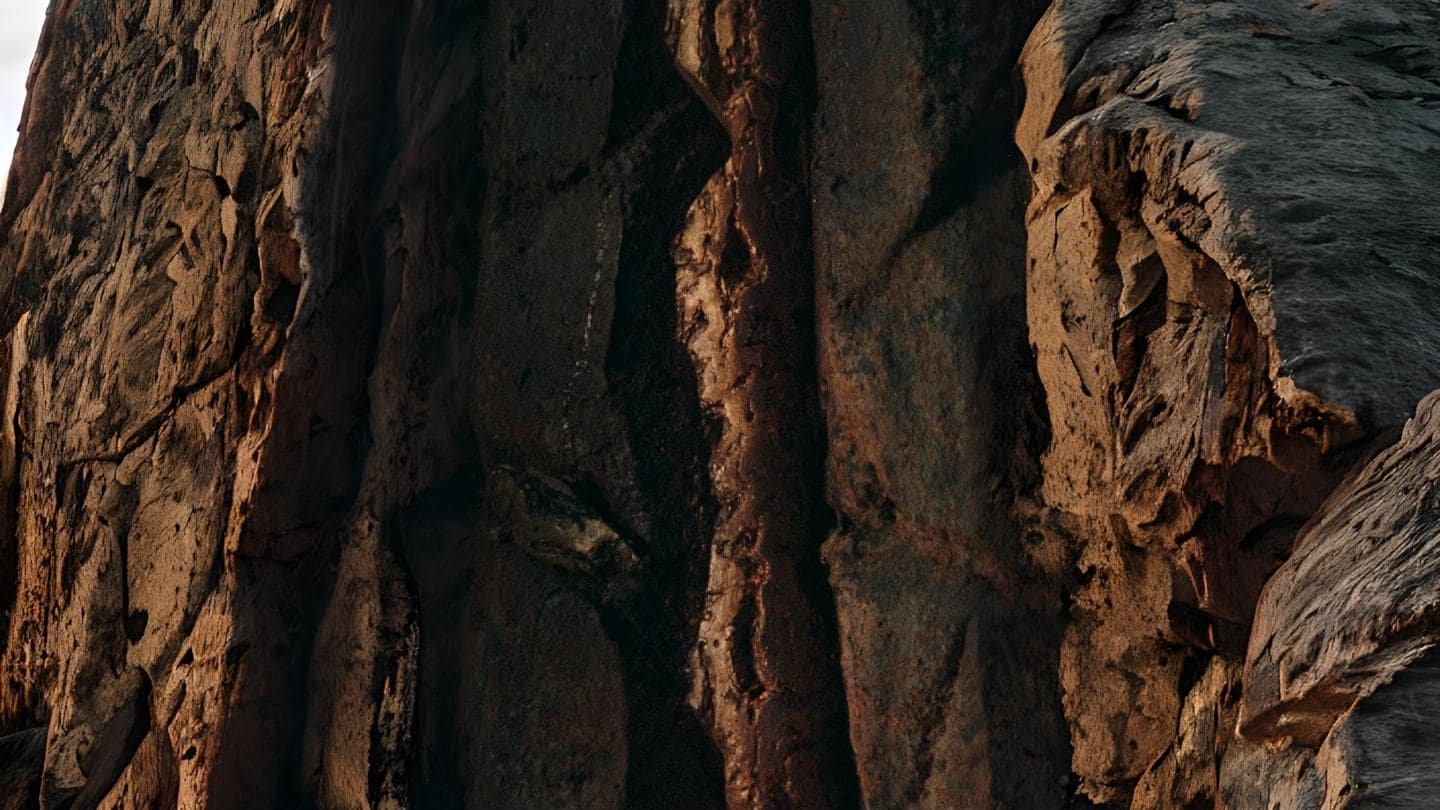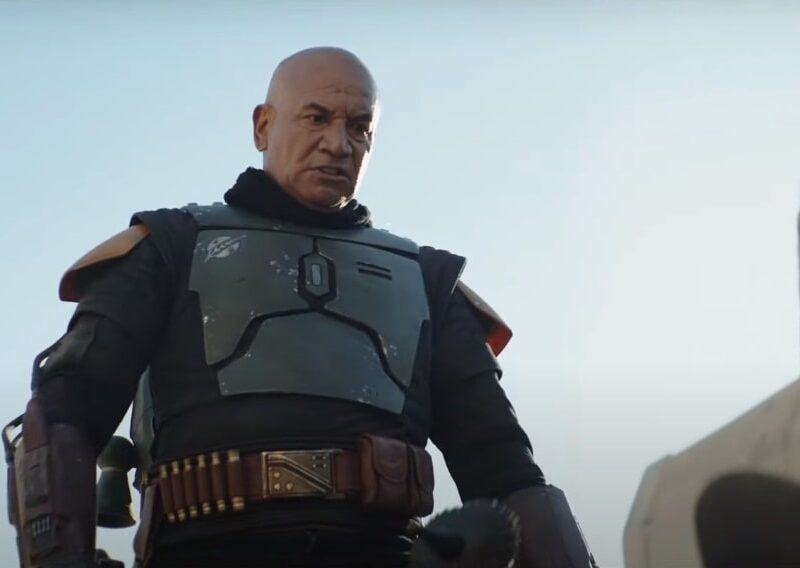1. What is Cortosis?
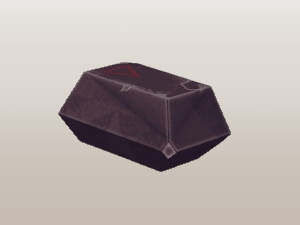
Cortosis was an exceptionally rare and brittle fibrous material known for its unique conductive properties that could temporarily short out lightsabers upon contact. This characteristic made cortosis a valuable component in anti-lightsaber melee weapons, although repeated strikes from a lightsaber could eventually cut through it.
Due to its energy-resistant nature, cortosis was also impervious to blaster fire. This metal could be found on the planets Dinzo, Mokivj, and the planet where the Sith known as Qimir, also called “the Stranger,” resided.
2. What Are the Properties and Applications of Cortosis?
Cortosis was a metal known for its exceptional energy absorption and transmission capabilities, allowing it to dissipate the energy from a blaster bolt upon contact.
As one of the strongest minerals in the galaxy, cortosis could withstand a lightsaber strike and even briefly short out its blade. It also had the unique ability to redirect explosive heat, as demonstrated when General Anakin Skywalker tried to collapse a cortosis mine entrance, causing the explosion to breach Mokivj’s crust.
Additionally, cortosis had the ability to affect Force-sensitive individuals, as helmets made from the material could isolate the wearer’s thoughts, preventing others from sensing them.
However, despite these advantages, cortosis was naturally fragile, making it unsuitable for use as armor in its raw state. With considerable effort, it could be processed into armor.
When encountering cortosis armor, Chiss tactician Mitth’raw’nuruodo (“Thrawn”) theorized that the cortosis was woven into the armor as part of a defense matrix, allowing incoming energy from weapons like blasters or lightsabers to be dispersed across the entire armor.
Nevertheless, cortosis armor was vulnerable to sustained energy attacks, such as those from lightning guns, which could overload it, as well as to brute force strikes that could shatter it.
Many of the finest Mandalorian armors incorporated cortosis weave, a mesh of energy-resistant cortosis ore. Cortosis could also be forged into melee weapons like cortosis staves or swords, which retained the metal’s defensive properties. Additionally, cortosis weave was used in crafting cortosis shields.
3. What Types of Cortosis Weapons Exist?
The types of cortosis weapons are Cortosis Blades, Cortosis Gauntlets, Cortosis Staff, Cortosis-weave Armor, Cortosis Shield, and Cortosis Shot.
3.1 Cortosis Blades
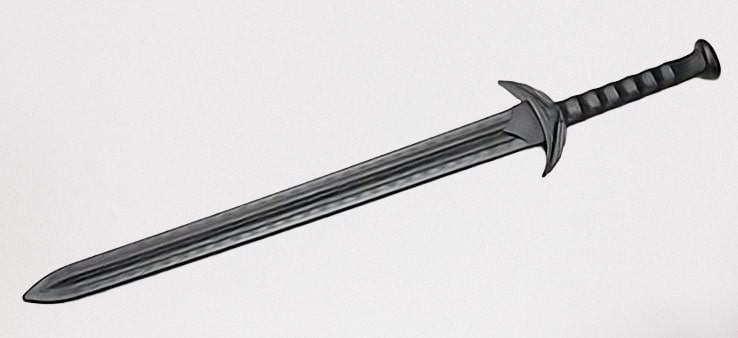
Cortosis blades were edged melee weapons either made from or enhanced by cortosis. These weapons were produced by various manufacturers and became widely available during the Jedi Civil War around 3956 BBY, developed for several reasons.
One key reason was cortosis’s ability to render many items resistant to lightsabers when mixed with other ores or materials. This property made cortosis a common component in many vibroswords during the Jedi Civil War.
Additionally, pure cortosis blades were created specifically to short out lightsabers, providing a significant advantage in combat. These blades were often capable of disabling a lightsaber for several minutes, proving to be highly effective.
During the Invasion of Naboo in 32 BBY, the Trade Federation employed assassin droids equipped with cortosis swords to engage Jedi, though many of these droids were destroyed by Obi-Wan Kenobi and Qui-Gon Jinn.
Before and during the Clone Wars, the Farghul male Harll wielded a cortosis blade given to him by the Morgukai warriors. Jedi Master Shadday Potkin also used a cortosis blade against Darth Vader during the Conclave on Kessel. Although Potkin was killed, Vader then used the blade against Jastus Farr on Kessel.
3.2 Cortosis Gauntlets
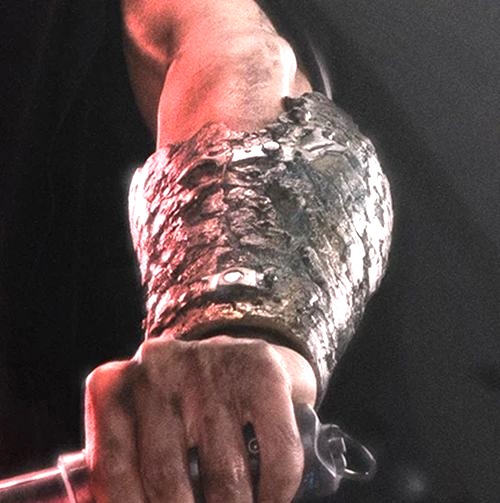
Cortosis gauntlets were arm braces made with cortosis ore woven into them, serving as protective shields for warriors in lightsaber combat. Due to cortosis’s natural resistance to lightsabers, any contact between a lightsaber blade and the gauntlets would cause the blade to short out for several minutes.
During the Yinchorri Uprising, Jedi Master Micah Giiett owned a cortosis vambrace, which he used to teach Padawans about lightsaber-resistant materials. During the Clone Wars, the Anzati assassin Sajé Tasha wore a pair of clawed cortosis gauntlets.
These gauntlets were also standard gear for all Imperial Knights serving under Galactic Emperor Roan Fel, who, being a fully trained Knight himself, wore a pair as well. Sith Lord Darth Kruhl was caught off guard when his lightsaber deactivated during a duel with Emperor Fel on Bastion.
3.3 Cortosis Staff
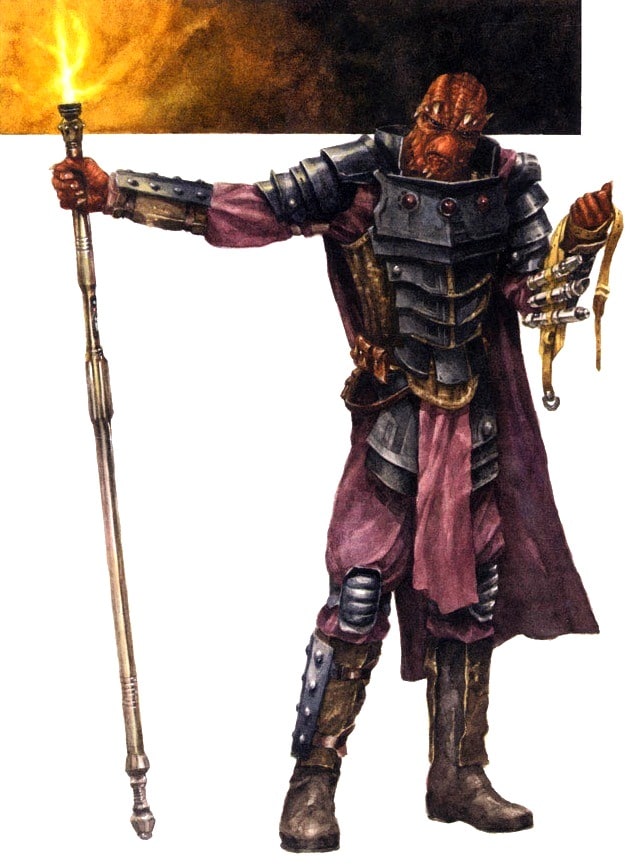
The cortosis staff was a melee weapon created by the Morgukai warriors—a sect of Kajain’sa’Nikto—specifically designed for combat against Jedi. The staff was infused with cortosis ore.
The top of the staff could emit a small plasma blade similar to a lightsaber, while the bottom contained a compact yet powerful electrical generator. This generator not only powered the energy blade but also allowed the staff to discharge potent bursts of electrical energy upon contact. As a result, the staff functioned as an electrostaff, a lightstaff, and a lightspear all in one.
The cortosis staff, about a meter long, featured a small electrical generator, much like the electrostaffs used by IG-100 MagnaGuards during the Clone Wars. This staff could serve as both a deadly spear and an electro stun weapon, effectively neutralizing the advantage of lightsaber-wielding opponents. Notable Morgukai warriors like Tsyr and Bok, as well as members of the Morgukai Shadow Army on Saleucami, wielded these weapons.
It is believed that Tholme was the first Jedi to encounter a cortosis staff in combat. During a fight with Tsyr on Ryloth in 30 BBY, Tholme was knocked unconscious by a blow from the weapon. He later informed Aayla Secura about the staff’s capabilities and requested that she report its existence to the Jedi High Council.
3.4 Cortosis-weave Armor
3.4.1 Cortosis-weave
Cortosis-weave was a swordsmithing technique designed to make melee weapons resistant to lightsabers. It involved integrating cortosis ore into the weapon’s construction, enabling the blade to withstand lightsaber strikes without being cleaved in two. Cortosis-weave was particularly valued because it offered a more economical method of reinforcing weapons against lightsabers, using less cortosis compared to other methods.
The technique became widespread, especially among cultures anticipating combat with lightsaber-wielding opponents, and was notably perfected by Echani weaponsmiths before the Mandalorian Wars.
3.4.2 Cortosis-weave Armor
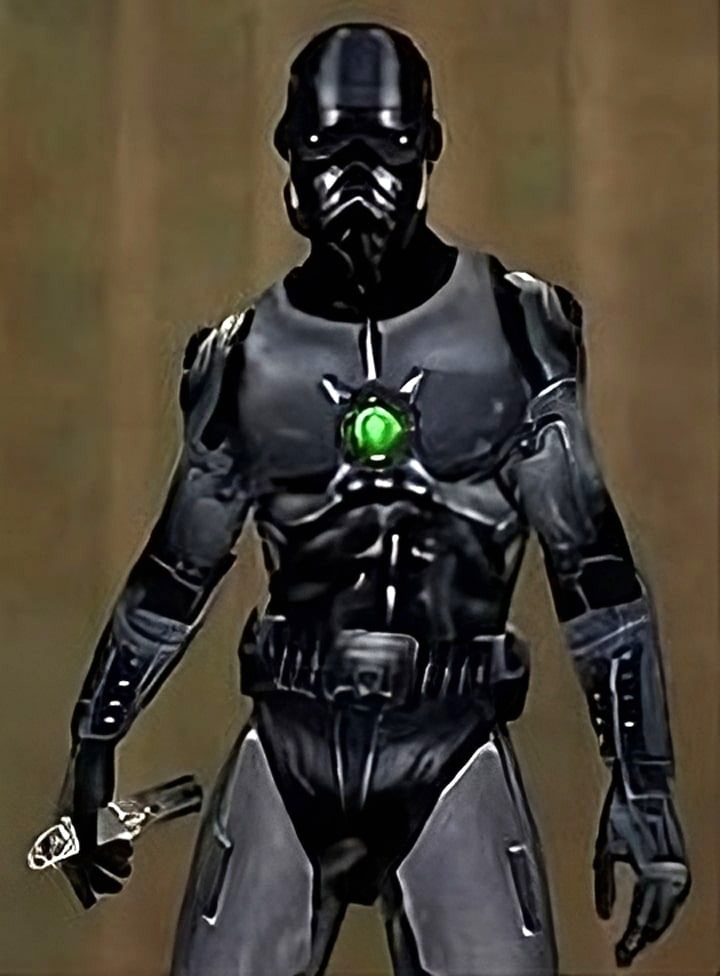
Cortosis-weave armor was designed to be resistant to lightsabers by incorporating traces of cortosis. However, since cortosis-weave contained only small amounts of the ore, the armor lost the ability to deactivate an opponent’s energy blade, instead providing mere resistance to lightsaber strikes.
Cortosis-weave was in use as early as 4000 BBY, serving both as an armor underlay and for tempering traditional melee weapons against lightsabers. During this period, cortosis ore appeared to be more abundant, but it later became rarer and more valuable, giving wearers an unexpected advantage against Force-sensitive opponents.
This armor was notably used by the Yinchorri during the Yinchorri Uprising in 33 BBY. A variation was also employed by the Jensaarai, who customized their armor with cortosis weave patterns for decoration, while retaining the armor’s practical benefits. The cortosis used by the Jensaarai was smuggled from the gas planet Bespin.
Additionally, the armor worn by the Force-sensitive Shadowtroopers of the Empire Reborn, who clashed with Kyle Katarn and members of the Yavin 4 Jedi Academy in 13 ABY, was also reinforced with cortosis weave.
3.5 Cortosis Shield
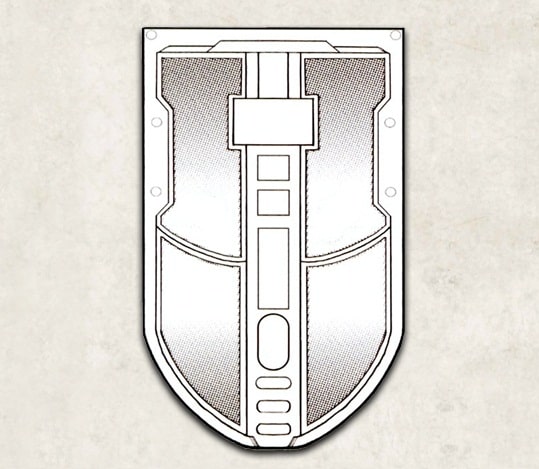
A cortosis shield was a piece of protective equipment made from cortosis ore, available in various forms, such as armguards. Once the impurities were removed from the ore, these shields were highly effective at repelling lightsabers, similar to cortosis-weave armor. When struck by a lightsaber, the shield would cause the weapon to short out, requiring the lightsaber to be restarted to function properly.
Darth Desolous and his army of Pau’an soldiers wielded cortosis alloy shields in many battles, using them to massacre countless Jedi. The Yinchorri also employed these shields during their raid on the Jedi Temple, but despite their cortosis protection, the attack force was nearly annihilated by the Jedi, suffering only two Jedi casualties.
3.6 Cortosis Shot

A cortosis shot was a slugthrower projectile made from cortosis metal, used by Cad Bane in 21 BBY.
When the bullet struck a lightsaber blade, it would disrupt the blade, giving the shooter an upper hand against the lightsaber wielder.
However, Bane mentioned that these bullets were costly and took a toll on the slugthrower’s barrel.
4. Historical Applications of Cortosis
- Apatros Mining: During the New Sith Wars, the Outer Rim Oreworks Company mined cortosis on Apatros. This was the birthplace of the future Dark Lord of the Sith, Darth Bane, who spent several years drilling cortosis before fleeing to join the Sith Army.
- Obredaan Mining: The Jin’ha mined cortosis on Obredaan. During the Invasion of Naboo, Trade Federation assassin droids utilized cortosis weapons.
- Bal’demnic Mining: During the Clone Wars, the Jedi Council discovered that the Confederacy of Independent Systems was mining cortosis on Bal’demnic. The Council sent a task force led by Halagad Ventor and Sha Koon to sabotage the operation.
- Micah Giiett’s Vambrace: Jedi Master Micah Giiett owned a cortosis vambrace, which he used to educate Padawans about lightsaber-resistant materials.
- Sajé Tasha’s Gauntlets: Anzati assassin Sajé Tasha wore a pair of clawed cortosis gauntlets during the Clone Wars.
- Deposits on Duro and Katanos VII: Large deposits of cortosis were also known to exist on Duro and Katanos VII.
- Quinlan Vos’ Gauntlet: During the Clone Wars, Quinlan Vos wore a cortosis gauntlet on his left arm.
- Darth Desolous’ Shield: The Pau’an Sith Lord, Darth Desolous, wielded a cortosis shield to block lightsaber attacks.
- Cad Bane’s Slugthrower: Cad Bane used a slugthrower that fired cortosis shots, which he employed against Bolla Ropal to disable his lightsaber and capture him.
- Galak Fyyar’s Armor: Galak Fyyar had an entire powered suit of shielded battle armor made from cortosis alloy.
- Riot Stormtroopers’ Electrostaffs: Riot stormtroopers were armed with electrostaffs made with cortosis.
- Nirauan Discovery: Luke Skywalker and Mara Jade discovered a vein of cortosis on Nirauan while infiltrating the Hand of Thrawn during the Caamas Document Crisis.
- Nyss Nenn’s Vibroblades: The Umbaran Nyss Nenn used twin vibroblades coated with cortosis in combat. However, these proved ineffective against a Force-sensitive clone soldier, who minimized contact between their weapons by striking quickly, only causing his lightsaber to spark.
- Roan Fel’s Gauntlets: Roan Fel and all of his Imperial Knights wore pure cortosis gauntlets. These gauntlets served as protective shields in lightsaber combat. Sith Lord Darth Kruhl was surprised to find his weapon deactivate while dueling Emperor Fel on Bastion.
Explore Our Lightsaber Collection
Tony Allen is a writer for LightsabersBlog.com, a website focused on everything related to lightsabers. Tony grew up in Austin, Texas, and went on to study Mechanical Engineering at the University of Texas. Passionate about science fiction and fantasy, Tony has always been deeply involved in hobbies like tabletop RPGs, sci-fi novels, miniature painting, and crafting. This love for creative pursuits drives Tony to write about lightsabers in a way that ignites the imagination of fans around the world.

